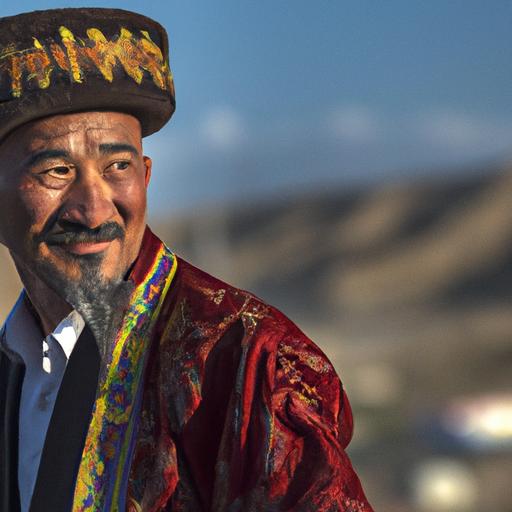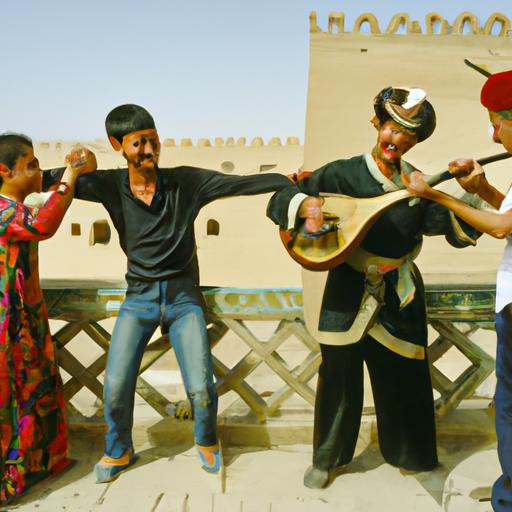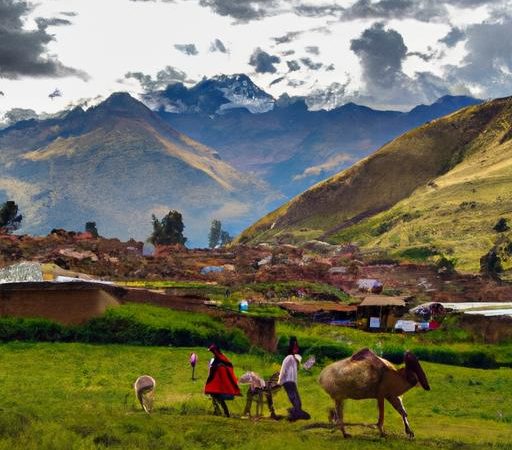The Silk Road Bazaar of Kashgar: Life on the Edge of China’s Xinjiang and Its Rich Cultures


The Silk Road Bazaar of Kashgar: Life on the Edge of China’s Xinjiang and Its Rich Cultures
If you are a lover of history, culture, and adventure, then a visit to the Silk Road Bazaar of Kashgar should be at the top of your travel bucket list. Located on the edge of China’s Xinjiang region, Kashgar is a city steeped in centuries of history and tradition. The bustling bazaar, which dates back over 2,000 years, is a vibrant hub of commerce and cultural exchange, reflecting the diverse ethnic groups that call this region home.
In this article, we will delve into the rich tapestry of life in Kashgar, exploring the unique customs, traditions, and attractions that make this ancient city such a fascinating destination. From the colorful markets of the Old Town to the awe-inspiring landscapes of the surrounding countryside, there is so much to discover in this hidden gem of Western China.
Exploring the Silk Road Bazaar: A Cultural Feast for the Senses
The Silk Road Bazaar of Kashgar is a sensory overload in the best possible way. As you wander through the labyrinthine market stalls, you will be greeted by a kaleidoscope of sights, sounds, and smells that are sure to leave a lasting impression. Here are just a few of the highlights you can expect to encounter:
- Colorful textiles and handicrafts: The bazaar is a treasure trove of handmade goods, from intricate silk scarves to traditional Uyghur carpets. Take your time to browse the stalls and haggle with the friendly vendors for that perfect souvenirs to take home with you.
- Exotic spices and traditional foods: The aromas wafting through the bazaar are simply irresistible. Sample local delicacies like kebabs, hand-pulled noodles, and steamed dumplings, and don’t miss the chance to try some of the exotic spices and teas on offer.
- Traditional music and dance: Throughout the day, you may be lucky enough to catch a glimpse of traditional Uyghur musicians and dancers performing in the streets. Their music is a hauntingly beautiful blend of Middle Eastern and Central Asian influences, and their colorful costumes are a feast for the eyes.
- Ancient architecture and historical sites: Kashgar is home to a number of fascinating historical sites, including the Id Kah Mosque, the Abakh Khoja Mausoleum, and the Kashgar Old Town, a UNESCO World Heritage Site. Wander through the narrow alleyways and soak up the atmosphere of this ancient city.
Life on the Edge of China’s Xinjiang: A Melting Pot of Cultures
Kashgar is a melting pot of cultures, with a rich tapestry of ethnic groups living side by side in harmony. The Uyghurs, who make up the majority of the population, are a Turkic people with their own language, customs, and cuisine. Other ethnic groups, such as the Kyrgyz, Tajiks, and Kazakhs, also call Xinjiang home, adding to the region’s cultural diversity.
One of the best ways to experience this cultural richness is by attending one of the many festivals and events that take place throughout the year. The Kashgar Sunday Market is a must-see, where you can witness the vibrant spectacle of traders from across the region gathering to buy and sell their wares. The Uyghur Meshrep Festival, which celebrates the start of spring, is another highlight, featuring traditional dancing, music, and horseback riding competitions.
If you are interested in delving deeper into the history and culture of Kashgar, consider taking a guided tour of the city with a local expert. They can provide invaluable insights into the region’s complex past and present, shedding light on the unique challenges and opportunities facing this remote corner of China.
Practical Tips for Visiting Kashgar and the Silk Road Bazaar
Before you set off on your adventure to Kashgar, there are a few practical tips to keep in mind:
- Visas: Make sure to check the latest visa requirements for traveling to Xinjiang, as they can vary depending on your nationality.
- Language: English is not widely spoken in Kashgar, so it’s a good idea to learn a few basic phrases in Uyghur or Mandarin before you go.
- Accommodation: There are a range of accommodation options in Kashgar, from budget guesthouses to luxury hotels. Make sure to book in advance, especially during peak tourist seasons.
- Currency: The currency used in Kashgar is the Chinese yuan (RMB), so make sure to have enough cash on hand for your trip.
In conclusion, a visit to the Silk Road Bazaar of Kashgar is a journey back in time to a world of ancient traditions, vibrant customs, and rich cultural heritage. From the bustling markets to the ancient landmarks, there is so much to discover in this hidden gem of China’s Xinjiang region. So pack your bags, brush up on your bargaining skills, and get ready for the adventure of a lifetime in Kashgar. Happy travels!
The vibrant bazaars of the Silk Road are a testament to the rich history and cultural diversity of the region. Among the many bustling bazaars along the ancient trade route, the Kashgar Bazaar stands out for its unique blend of Chinese, Central Asian, and Middle Eastern influences. Nestled in the westernmost part of China’s Xinjiang province, Kashgar was an important stop on the Silk Road, connecting China with the rest of Central Asia and Europe.
Today, the silk road bazaar of Kashgar remains a vibrant hub of trade and cultural exchange. It’s a place where modernity meets tradition, and where different ethnic groups come together to preserve their heritage and way of life. In this article, we will dive into the fascinating world of the Silk Road Bazaar of Kashgar and explore its rich cultures, traditions, and unique experience.
The Fascinating History of Kashgar Bazaar:
The Kashgar Bazaar dates back over 2000 years, making it one of the oldest and most well-preserved bazaars on the Silk Road. For centuries, Kashgar was a key trading post between China and the West, and the bazaar was the center of this thriving trade. Silk, spices, and other valuable goods were traded here, making Kashgar a hub of wealth and cultural diversity.
During the 19th century, Kashgar became a vital part of the British Empire’s Great Game – a political and military rivalry between the British and the Russian Empires to gain control over Central Asia. This led to the bazaar being fortified and heavily guarded, and Kashgar became a hotbed of espionage and intrigue.
Life on the Edge of China’s Xinjiang:
Kashgar is located in Xinjiang, China’s largest and most remote province, making it a melting pot of cultures and traditions. It is home to various ethnic groups, including the Uyghurs, Han Chinese, Kazakhs, Tajiks, Kyrgyz, and several others, each with their unique customs and beliefs.
The Uyghurs are the largest ethnic group in Xinjiang and have been the dominant cultural force in the city for centuries. They speak a Turkic language and follow Sunni Islam, which is reflected in the bazaar’s goods and architecture. The Han Chinese, on the other hand, were sent to Xinjiang by the Chinese government in the 20th century as part of a resettlement program. They have brought their customs and traditions to Kashgar, adding to the diversity of the city.
Exploring the Kashgar Bazaar:
Visiting the Kashgar Bazaar is like traveling back in time. The sprawling marketplace is divided into different sections, each specializing in a particular trade or product. As you meander through the maze of narrow alleys, you will find yourself surrounded by colorful textiles, traditional handicrafts, spices, and much more.
The best way to explore the bazaar is by getting lost in its many lanes and soaking in the vibrant atmosphere. You will encounter friendly merchants, bargaining customers, and bustling crowds, all adding to the bazaar’s charm. It’s a sensory overload, with the aroma of spices, sounds of bargaining, and sights of colorful products.
Must-Visit Spots in the Bazaar:
Amidst the chaos and vibrancy of the Kashgar Bazaar, there are a few spots that you must visit to experience the true essence of the bazaar. These include the Old Town, Id Kah Mosque, and the Animal Market.
The Old Town, also known as the “Ancient City of Kashgar,” is a charming neighborhood where you can see traditional Uyghur homes and experience their way of life. The Id Kah Mosque is the largest mosque in China and is a magnificent example of Islamic architecture. The Animal Market, held every Sunday, is an exciting and chaotic affair where farmers gather to trade livestock and other animals.
Preserving Traditions in a Changing World:
As China continues to modernize and develop, the age-old traditions and cultures of Kashgar are at risk of being lost. However, the people of Kashgar continue to hold on to their traditions and are finding unique ways to preserve them.
One such effort is the revival of the traditional Uyghur art of silk road paper-making. This centuries-old practice was on the brink of dying out, but with the efforts of the local community, it’s now being revived and taught to younger generations.
Visiting the silk road bazaar of Kashgar not only provides a glimpse into the past but also supports the preservation of these traditions and cultures.
Practical Tips for Visiting Kashgar Bazaar:
1. The bazaar is open every day from 10 am to 9 pm, but it’s best to visit on Sundays when the animal market is held.
2. Cash is preferred for purchases, so make sure to have enough with you.
3. Don’t be afraid to bargain! It’s a part of the shopping culture in the bazaar, and you’ll get better deals if you negotiate.
4. Respect the local customs and dress modestly, especially if visiting the Id Kah Mosque.
5. Try the local delicacies, such as lamb kebabs, naan bread, and various Uyghur dishes. They are a delicious representation of the region’s cuisine.
Conclusion:
The Silk Road Bazaar of Kashgar is a unique and fascinating cultural experience that should not be missed. It’s a place where the past meets the present, and where different cultures come together to create a vibrant and diverse community. By visiting this bazaar, we can not only learn about the rich history of the Silk Road but also support the preservation of traditional cultures in a changing world. So, plan your trip to Kashgar and immerse yourself in the bustling world of the Silk Road.






